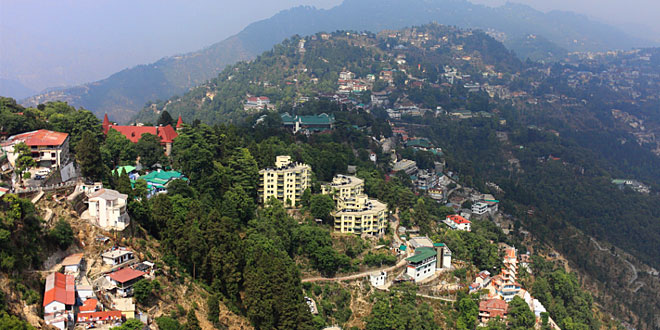Question: Give an account of the Northern Plains of India.
Answer: The northern plain has been formed by the interplay of the three major river systems, namely– the Indus, the Ganga and the Brahmaputra along with their tributaries. This plain is formed of alluvial soil. The deposition of alluvium in a vast basin lying at the foothills of the Himalaya over millions of years, formed this fertile plain. It spreads over an area of 7 lakh sq. km. The plain being about 2400 Km long and 240 to 320 Km broad is a densely populated physiographic division. With a rich soil cover combined with adequate water supply and favorable climate it is agriculturally a very productive part of India. The rivers in their lower course split into numerous channels due to the deposition of silt. These channels are known as distributaries. The Northern Plain is broadly divided into three sections. The Western part of the Northern Plain is referred to as the Punjab Plains. Formed by the Indus and its tributaries, the larger part of this plain lies in Pakistan. The Indus and its tributaries–the Jhelum, the Chenab, the Ravi, the Beas and the Satluj originate in the Himalaya. This section of the plain is dominated by the doabs.
Question: Write short notes on the following. (i) The Indian Desert, (ii) The Central Highlands
(iii) The Island Groups of India
Answer:
- The Indian Desert: The Indian desert lies towards the western margins of the Aravali Hills. It is an undulating sandy plain covered with sand dunes. This region receives very low rainfall below 150 mm per year. It has arid climate with low vegetation cover. Streams appear during the rainy season. Soon after they disappear into the sand as they do not have enough water to reach the sea. Luni is the only large river in this region. Barchans (crescent shaped dunes) cover larger areas but longitudinal dunes become more prominent near the Indo-Pakistan boundary.
- The Central Highlands: The Peninsular plateau consists of two broad divisions, namely, the Central Highlands and the Deccan Plateau. The part of the Peninsular plateau lying to the north of the Narmada river covering a major area of the Malwa plateau is known as the Central Highlands. The Vindhyan range is bounded by the Central Highlands on the south and the Aravalis on the northwest. The further westward extension gradually merges with the sandy and rocky desert of Rajasthan.The flow of the rivers draining this region, namely the Chambal, the Sind, the Betwa and Ken is from southwest to northeast, thus indicating the slope. The Central Highlands are wider in the west but narrower in the east. The eastward extensions of this plateau are locally known as the Bundelkhand and Baghelkhand. The Chotanagpur plateau marks the further eastward extension, drained by the Damodar river.
- The Island Groups of India: This group of islands is composed of small coral islands. Earlier they were known as Laccadive, Minicoy and Amindive. In 1973 these were named as Lakshadweep. It covers small area of 32 sq km. Kavaratti island is the administrative headquarters of Lakshadweep.This island group has great diversity of flora and fauna. The Pitli Island, which is uninhabited, has a bird sanctuary. An elongated chain of islands located in the Bay of Bengal extending from north to south. These are Andaman and Nicobar islands. They are bigger in size and are more numerous and scattered. The entire group of islands is divided into two broad categories – The Andaman in the north and the Nicobar in the south. It is believed that these islands are an elevated portion of submarine mountains. These island groups are of great strategic importance for the country. There is great diversity of flora and fauna in this group of islands too. These islands lie close to the equator and experience equatorial climate and has thick forest cover.
 Class Notes NCERT Solutions for CBSE Students
Class Notes NCERT Solutions for CBSE Students



